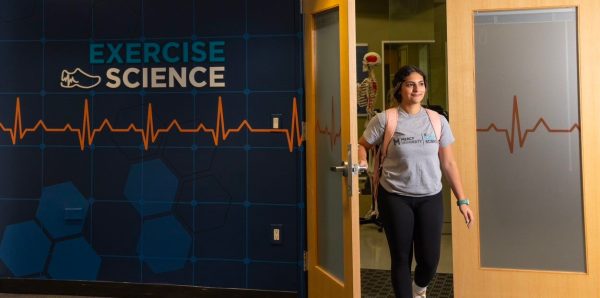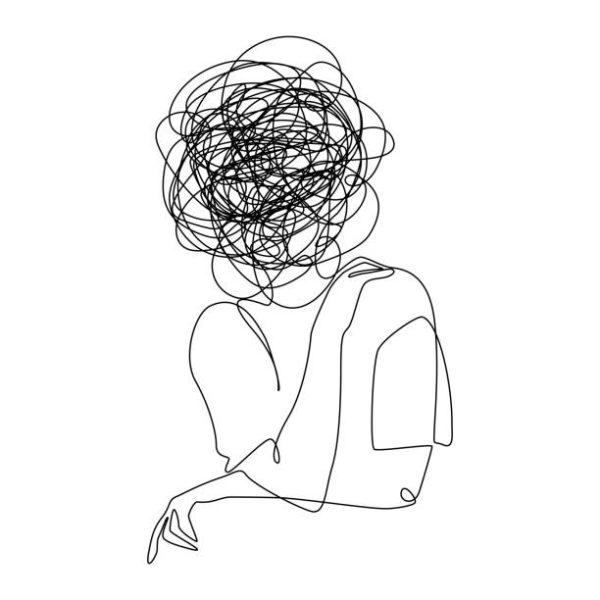Student Opens Up About Borderline Personality Disorder

Sitting frantically on her bed, “Alexis” turns to the next page in her text book. She looks down at the words that seem so unfamiliar and worries what her future will hold.
With the sudden mixture of worrying whether she’ll fight through to receive her degree, she battles the sudden switch of emotions on the rise.
Alexis has dealt with anxiety, panic disorder and a learning disability since the age of 12 and has gone through Cognitive Behavior Therapy (CBT). After realizing it was only working 50 percent of the time, Alexis’ therapist diagnosed her with something new: Borderline Personality Disorder.
“I’ve always had very strong emotional reactions, excessive crying,” she began to say. “Letting go of negative thoughts is hard when you’re going from one extreme to another.”
She paused.
“Never being in control of what you’re feeling and thinking is the worst feeling in the world. You’re struggling with new situations and how to interpret other people.”
Borderline Personality Disorder (BPD) is often distinguished as a mental illness. It’s characteristics include sensitivity to rejection or criticism, emotional instability, an intense fear of possible abandonment, and a difficulty regulating emotions. People who are diagnosed with BPD are more likely to be accompanied with another illness, such as depression, anxiety, bipolar, and schizophrenia. Most times, but not all the time, symptoms associated with BPD also include suicide and self-harm.
Alexis stresses that she’s never had any of those, but knowing these key factors of her diagnosis, she doesn’t let any of it ruin her good days.
***
The summer morning when Alexis found out she had BPD, she felt fearful.
“I wasn’t sure exactly what it was,” she began to say. “I didn’t expect it.”
She had heard that BPD was a common diagnosis, but she felt it wasn’t talked about often. Her head glanced to the table. “It’s also often misdiagnosed and does not appear until adulthood.”
After going through CBT for eight years, where it was talk therapy, she has felt that no progress was made once she entered college.
“The strategies my therapist gave me weren’t helping as they should’ve at this point,” Alexis said. “I used to set aside a time to worry every day for about an hour and write down all my positive and negative thoughts. But none of that helped. Instead, it made it worse.”
Not knowing a thing about BPD, Alexis was told what she had could be cured within one to three years of Dialectical Behavior Therapy (DBT).
“There’s no medication. Nothing,” she said, defining the moment she found that out as shocking.
About 5.9 percent of the United States population has BPD. According to the National Institute of Mental Health, BPD was once historically viewed as difficult to treat, but after much research, it was scientifically proven that people with this disorder can recover. DBT is the treatment of choice for characteristics associated with BPD. It is the most cost-effective and proves there is light at the end of the tunnel for those suffering with this illness.
Alexis admits that she was more upset with the knowledge that she’d have to find a new therapist to work with, than finding out the actual diagnosis.
“I knew it would be a different transition,” she said. “But I was reassured that this would treat what I have.”
She describes DBT as an intensive program that deals with someone who has trouble with relationships, who doesn’t have any sort of control over their emotions, or coping with them. This type of therapy much different from the normal therapy, as this one works on skills such as mindfulness, interpersonal effectiveness, emotional regulation, distress tolerance.
DBT varies for individuals. Often, it can take less than a year, but other times, longer. The time length affects how much a person is devoted to the therapy and willing to get through it.
The National Institute of Mental Health states that there’s three types of mindsets when it comes to DBT. There’s wise mind, emotional mind, and logical mind.
“I swing back and forth, but more times than anything, I’m at emotional mind, where my thinking is based on emotions,” she said. “I look at my roommates and see how they never have the types of emotions as I do, where they’re always at logical mind, where thinking is based on facts and no emotions involved.”
In a way, as she describes it, everyone could benefit from DBT. Sometimes skills that deal with mindfulness, interpersonal effectiveness, emotional regulation, and distress tolerance come easier for some people.
For her, she knows she struggles with containing her emotions, while some people need it for something completely different. Admitting that when she’s flooded in emotions, they’re all over the place and not elevated.
When this happens, she often calls these her bad days. On these days, she uses the skills she’s learned through her therapy to help regulate her emotions and help her quickly.
“Since my emotions get pretty out of hand, I use the skill that best fits my issue, at least five times to make sure that it works.”
“It can be overwhelming at times because you don’t know what skills are useful in situations. It’s kind of a trial and error.”
***
Pulling out a small workbook, she opens the pages. Inside, it looks like an actual classroom workbook.
“Each week you have homework assignments on different skills,” she began to explain. “I had to name and write out three positives about myself a few weeks back.”
Recently, she has been creating a gratitude list, where she adds one item a day, and writes two positive quotes down.
This is only a part of what she does in DBT. Aside from homework, there’s learning a new mindfulness skill, and then writing down what skills she’s used within that week and how.
This is one of the many exercises that she enjoyed when it came to group therapy.
“In group, you are put with people who will also benefit from the therapy, like eating disorders, mood disorders, and alcoholism. Pretty much people who are more sensitive benefit from it.”
Currently, as she’s in individual therapy, she believes there are pros and cons to it.
“An upside to individual DBT is that the focus is on you and only you. In groups, the attention is spread.”
She Admits that her favorite aspect of individual therapy is that she has phone coaching. Phone coaching, as she describes it, is that she has her therapist’s phone number and is allowed to contact him any time for skills or help.
The only con that Alexis has with individual DBT is that she was used to being with people who had similar problems as she. She’s now working solely with someone who is trained and doesn’t actually have the response to understand what it feels like to live with a mental illness.
“In group DBT it’s kind of your own little support group.”
Only Alexis’ immediate family and close friends know about her illness. It’s not something she broadcasts for sympathy. Instead, it’s something she hides in order to work on every day and avoid the labels.
“When I found out I had BPD, my parents weren’t all that scared or surprised,” she began to say. “It’s not the first thing I was diagnosed with and it’s not something they label me with.”
After finally accepting the idea that she had this diagnosis, she came to the conclusion that just because she had it, it didn’t change who she was.
“My friends are the ones who taught me that. They are the most supportive and understanding.”
“They constantly reassured me that having BPD doesn’t mean I’m any different.”
***
After three short months of DBT, Alexis has seen much improvement in the way she tolerates her stress and her emotions, from where she originally started. She’s found the dialectical tension between the need for acceptance and the need for change in her life.
“It’s a slow process,” she began to say. “Everyday is different. Sometimes the skills work, and other days they don’t.”
Once she feels as though the emotions are on a rise, she utilizes the skills she’s learned to prevent them from going haywire.
“If you keep trying and never give up,” she added with a smile on her face, as she refers to the light at the end of the tunnel.
“It makes the hard days worth it.”

Kayla Simas is a Journalism major at Mercy College. She's from the forgotten borough of New York - Staten Island. She's an avid coffee drinker and enjoys...







